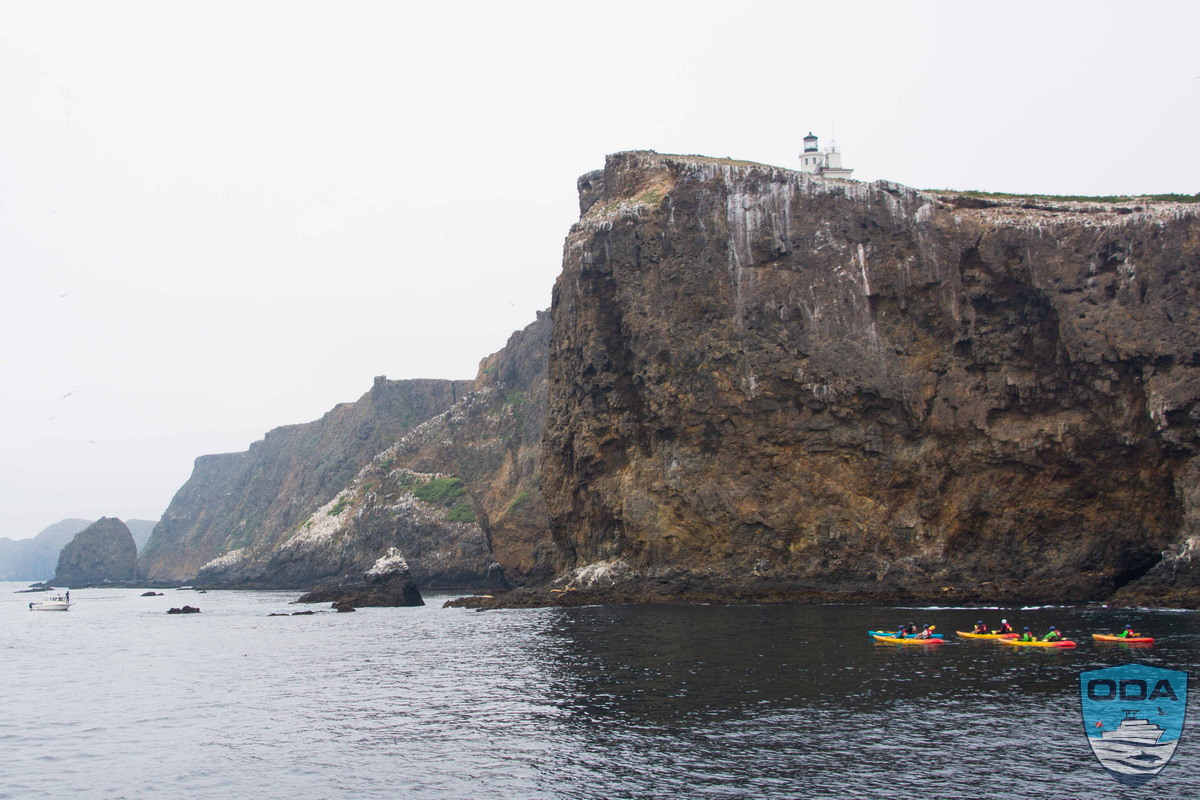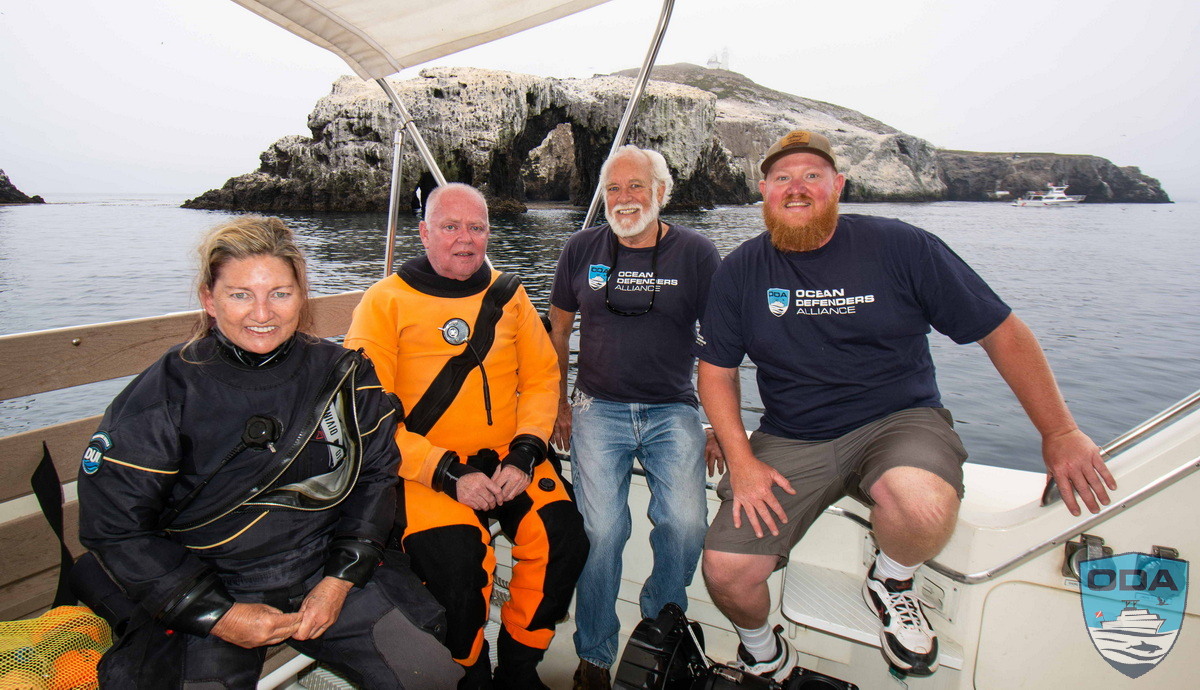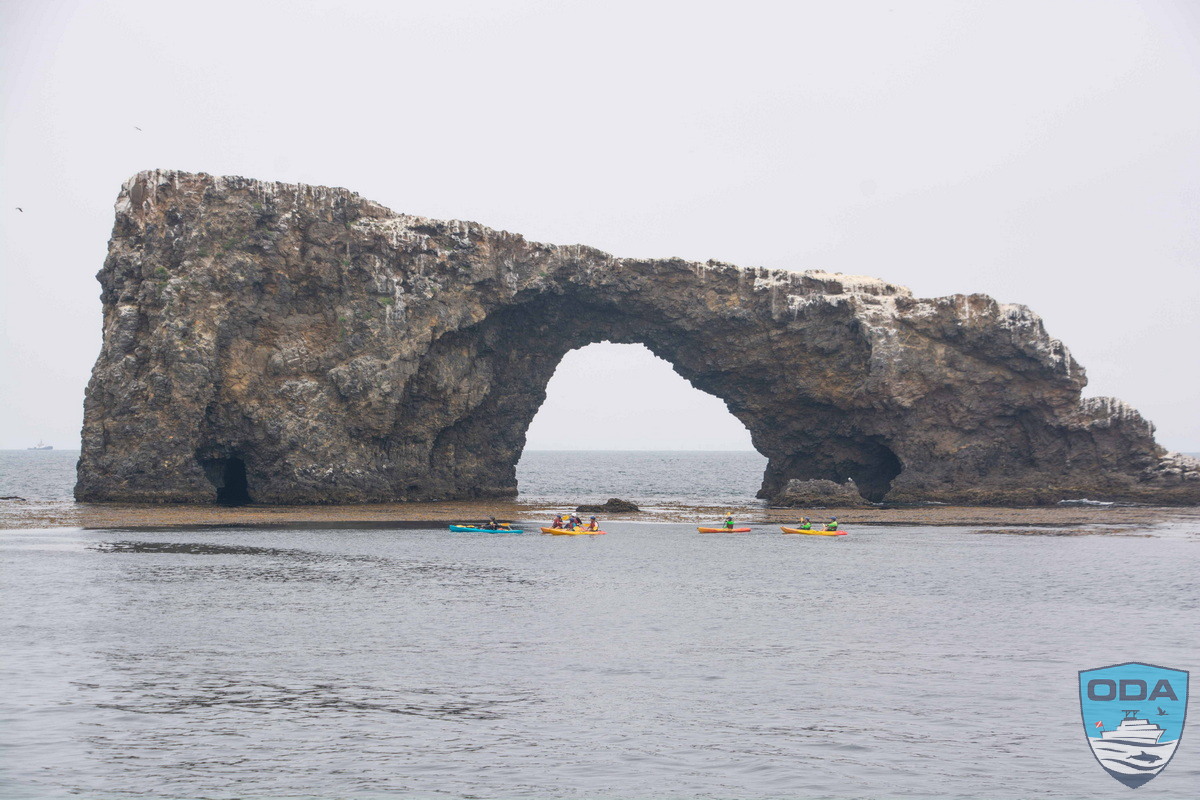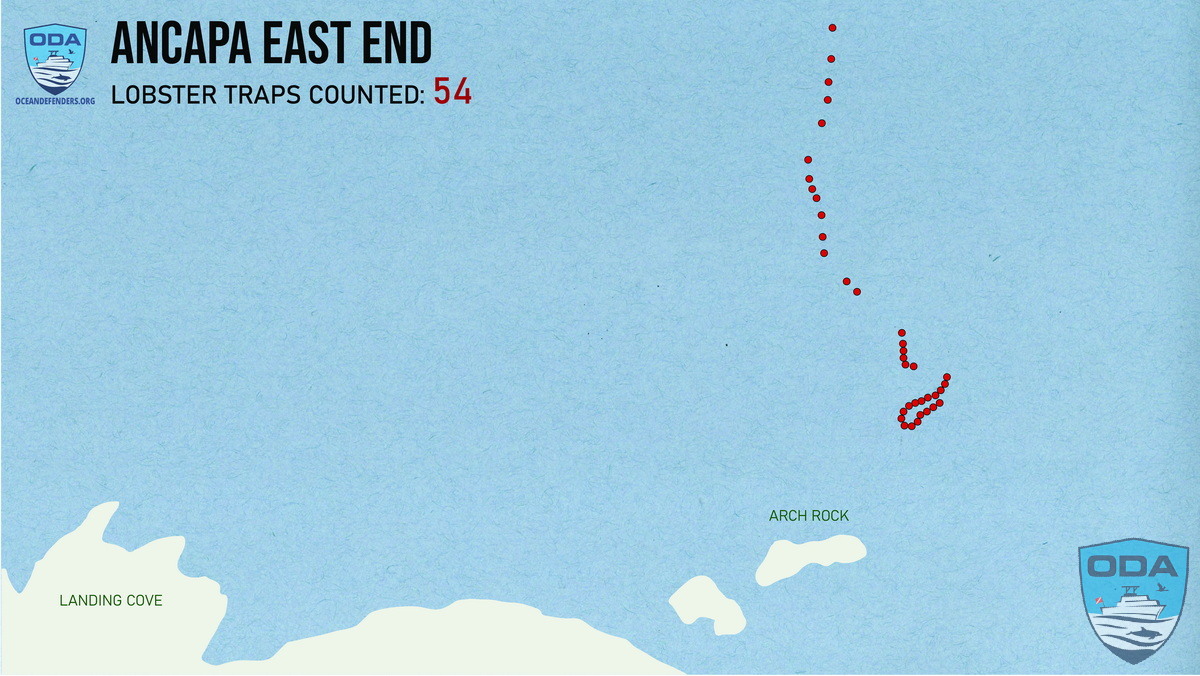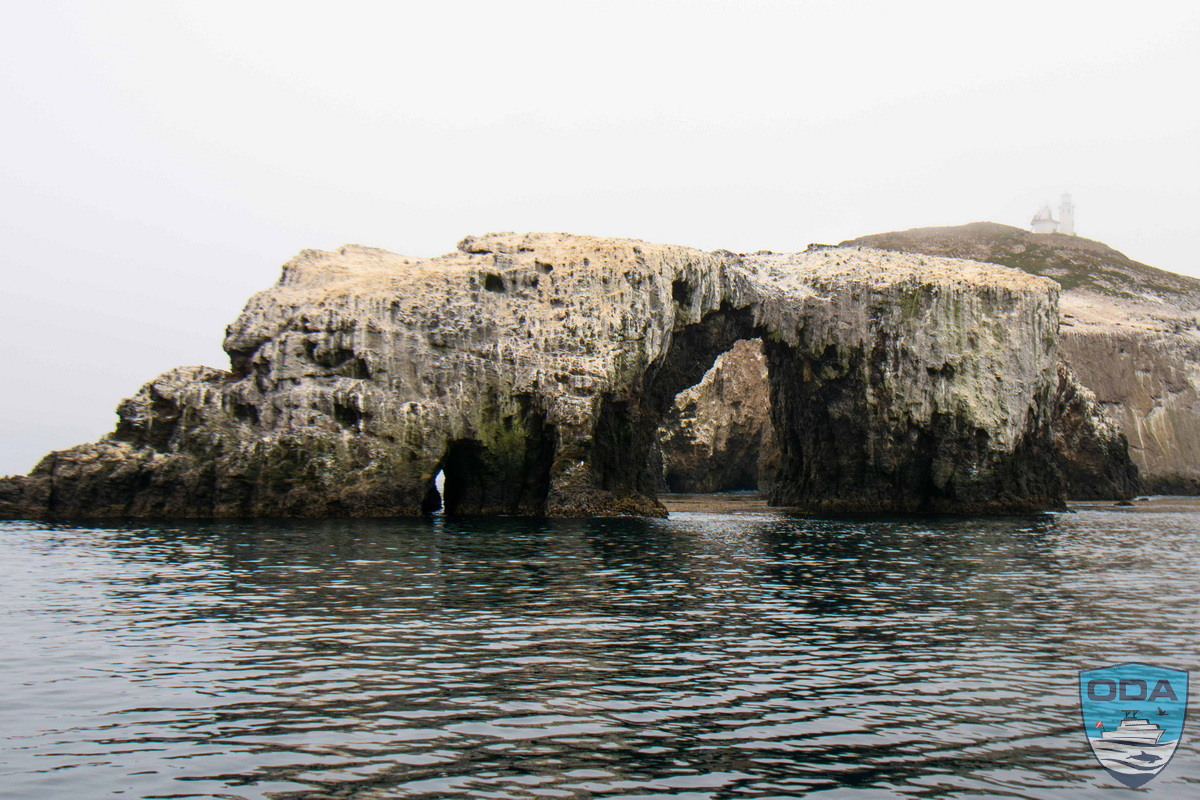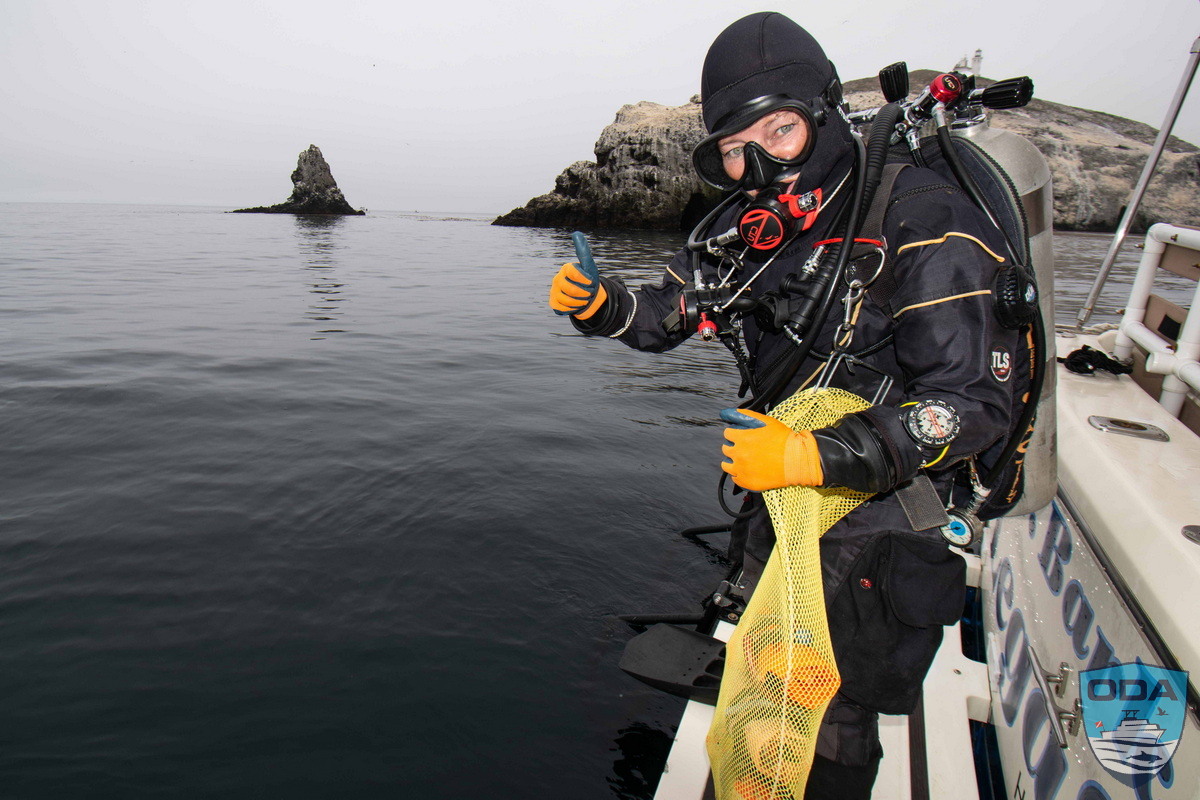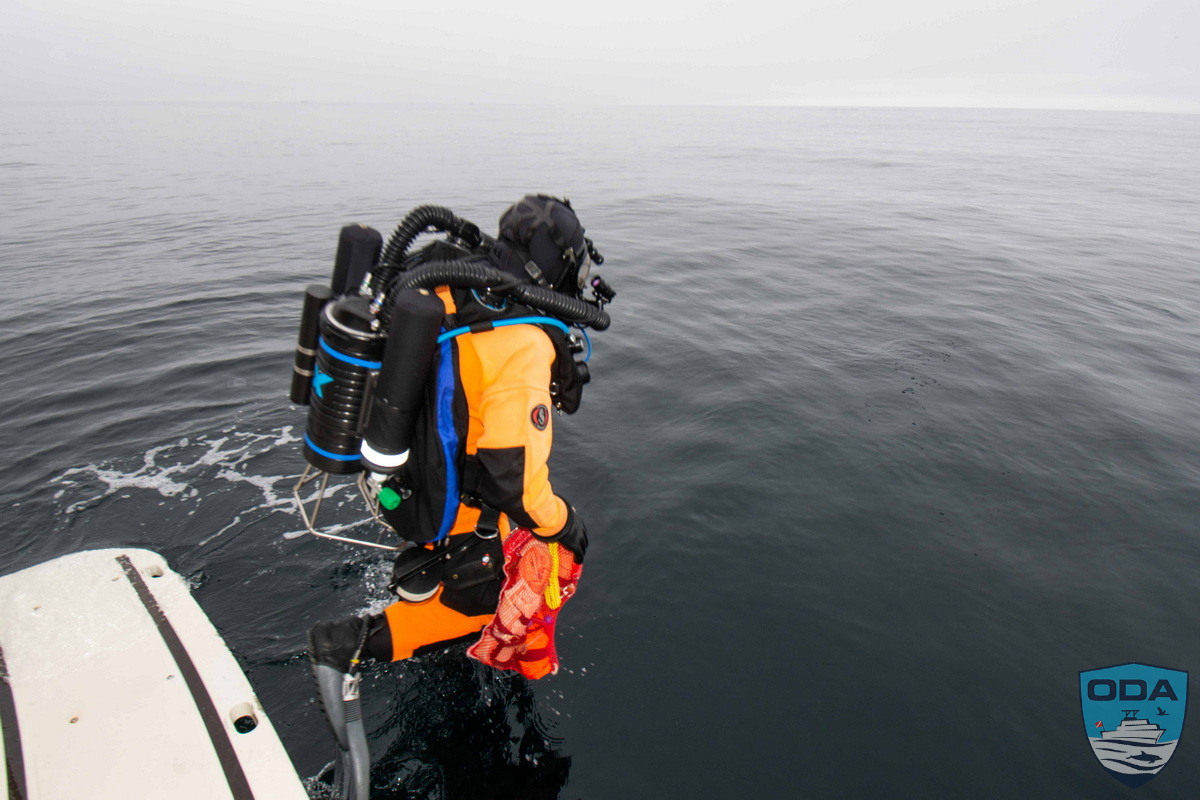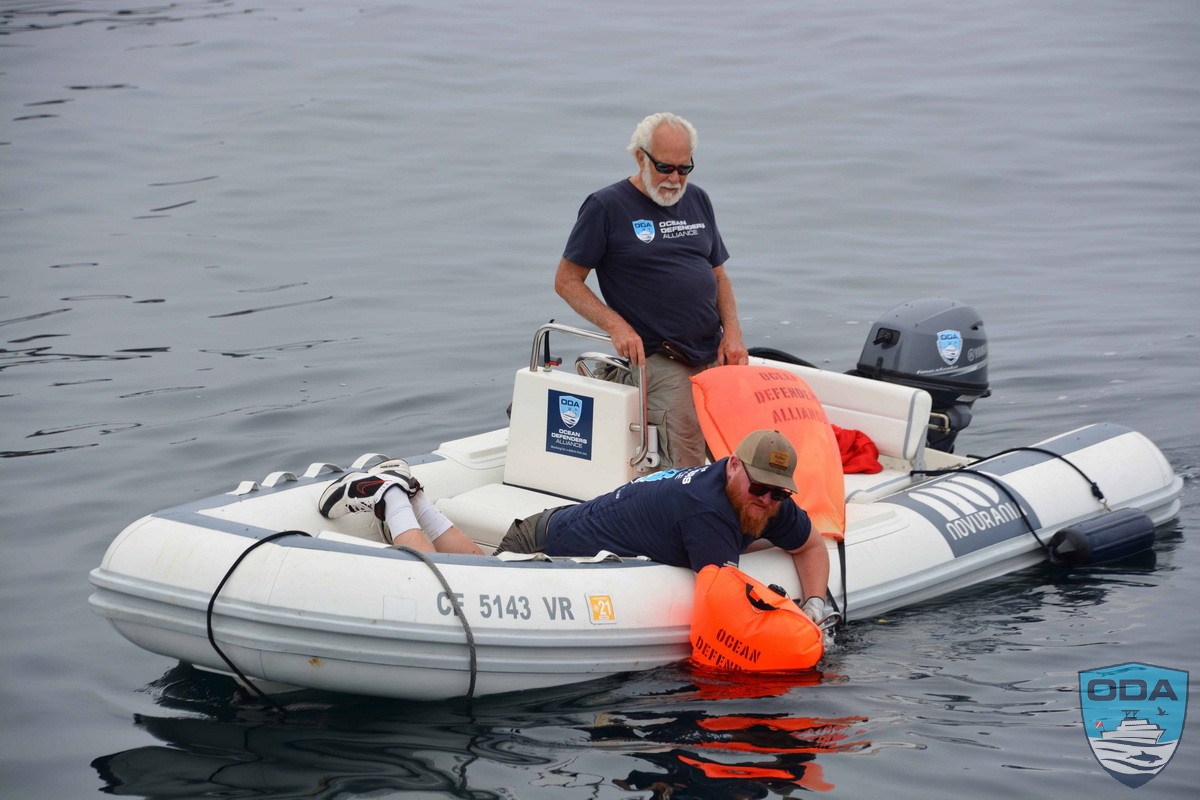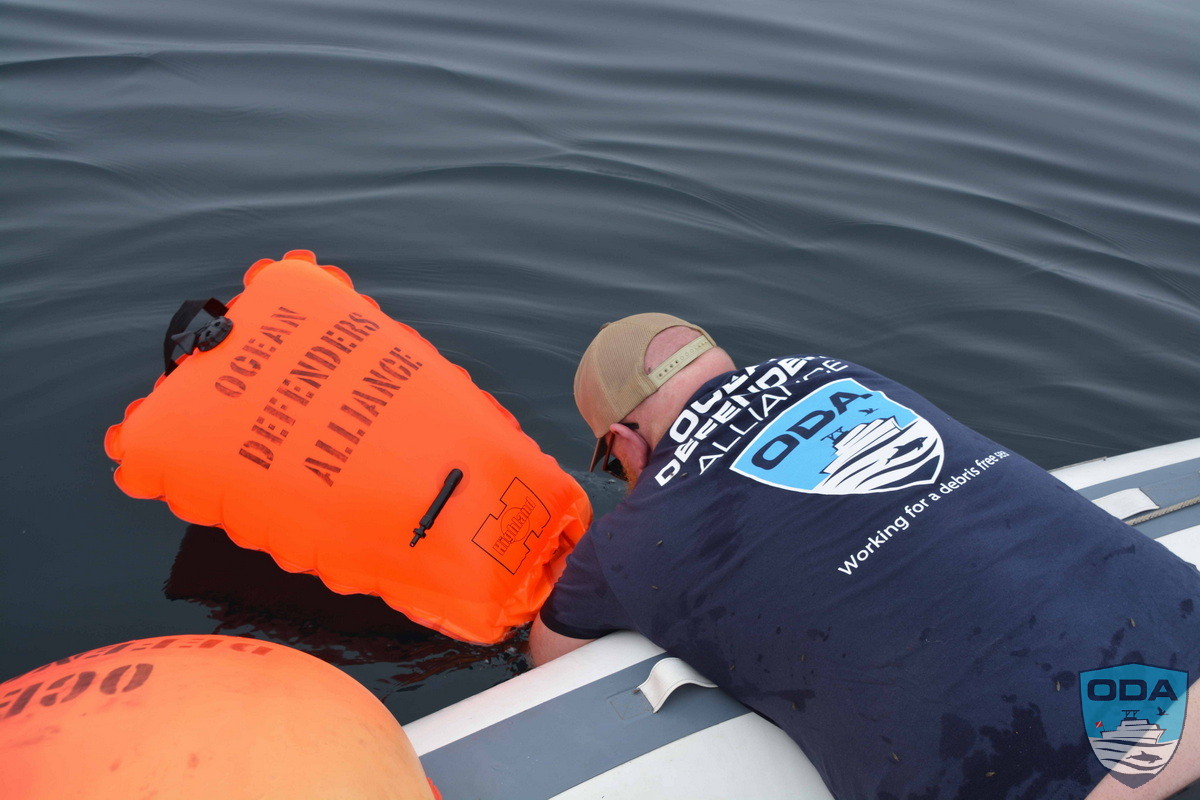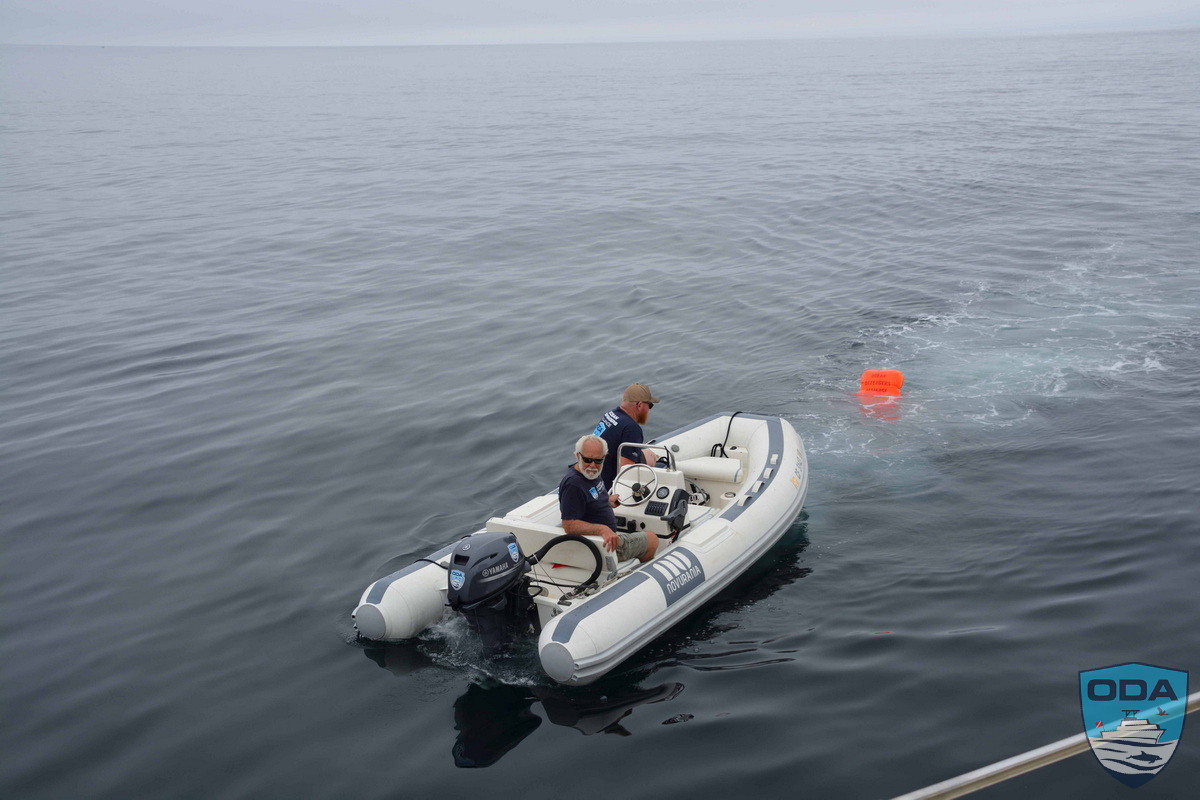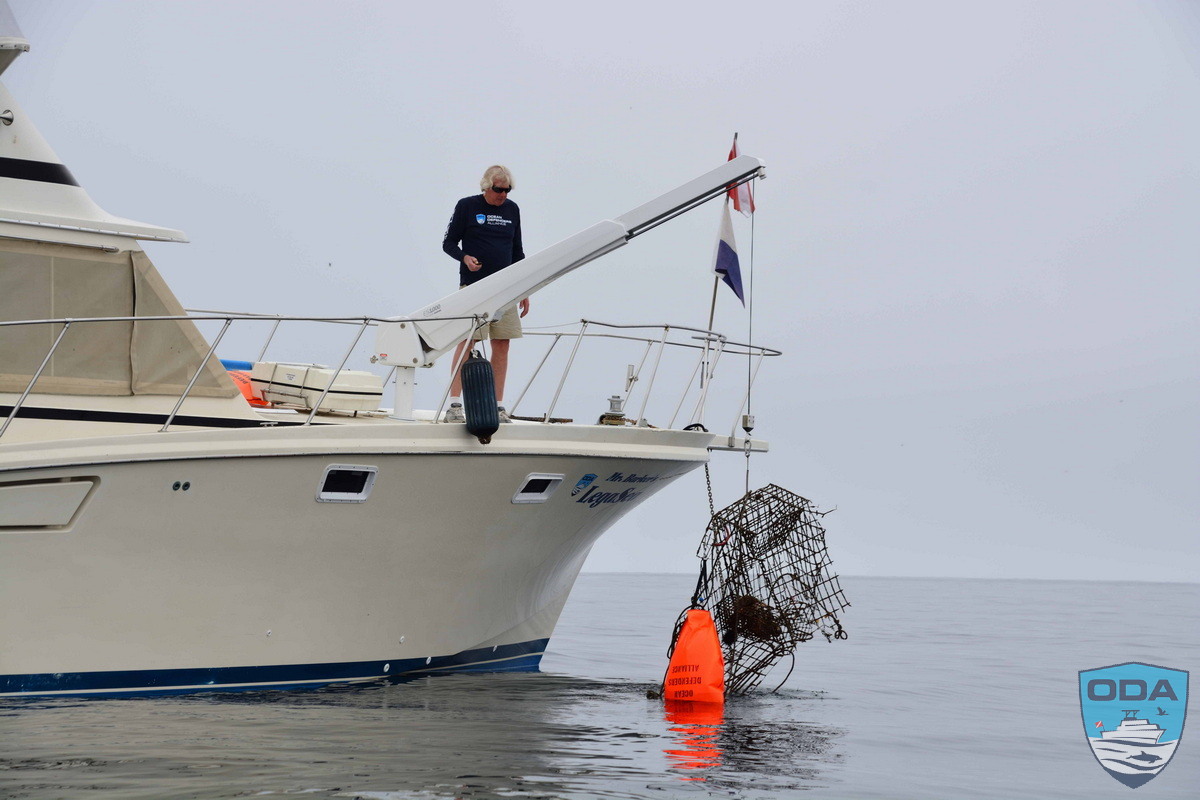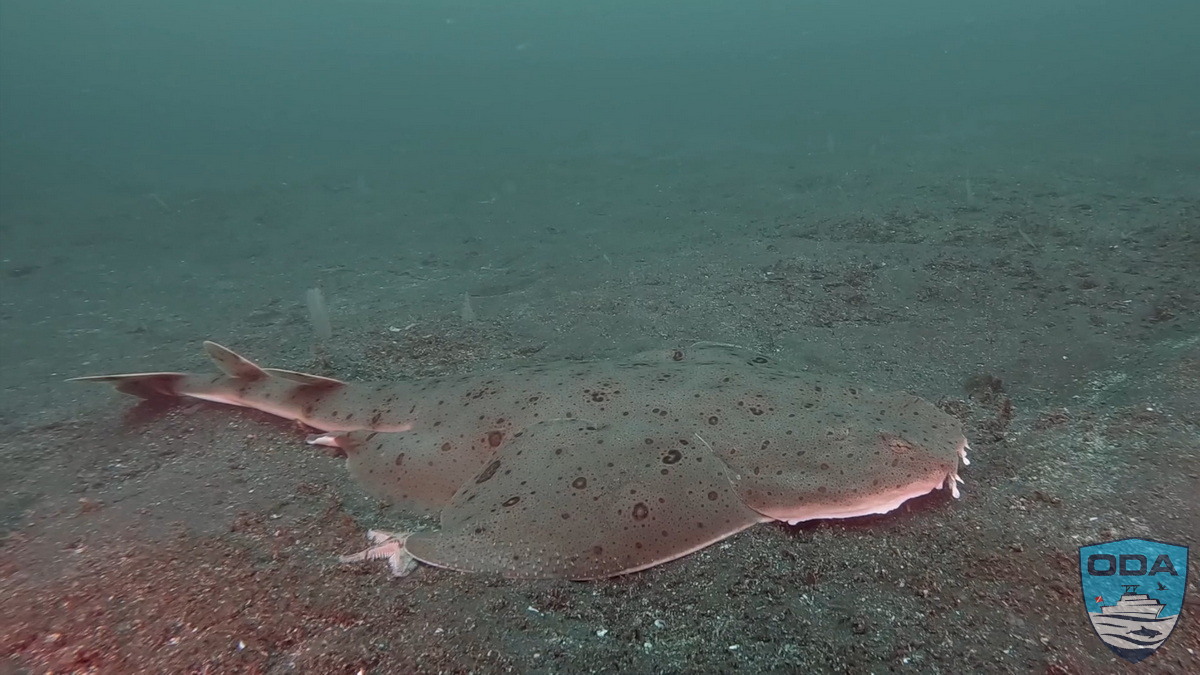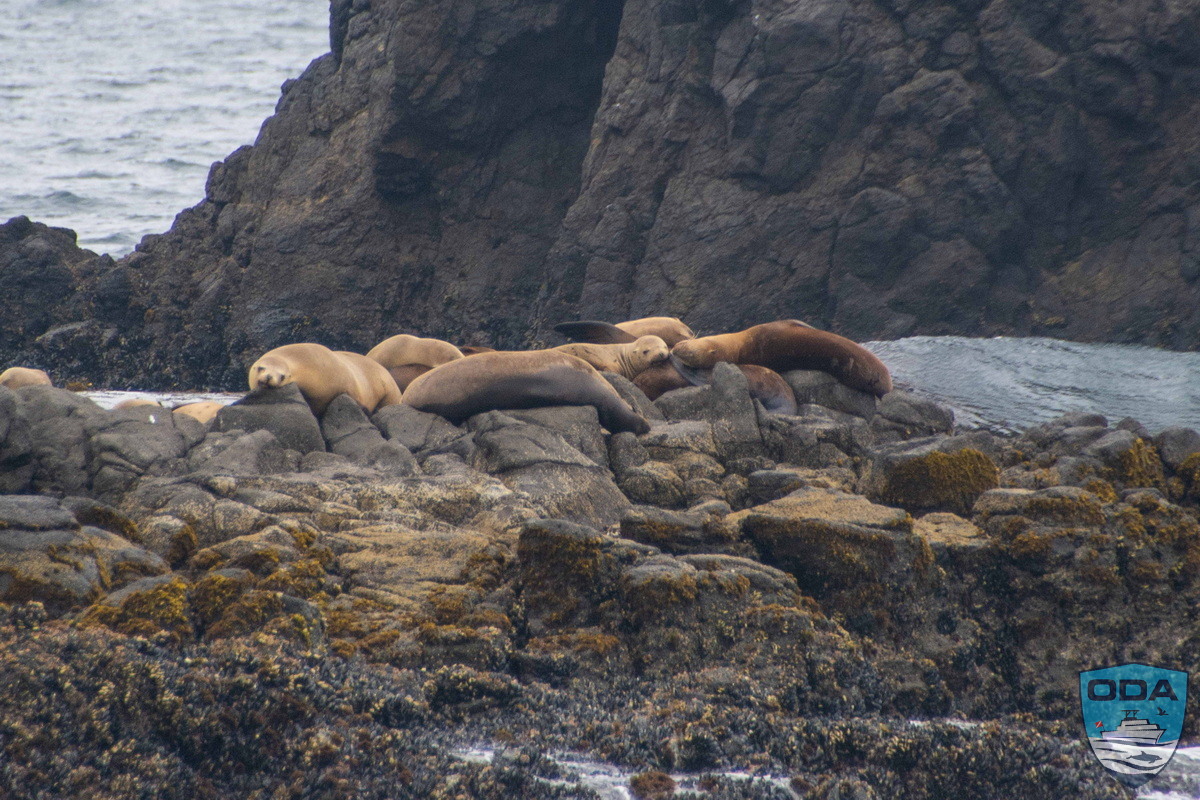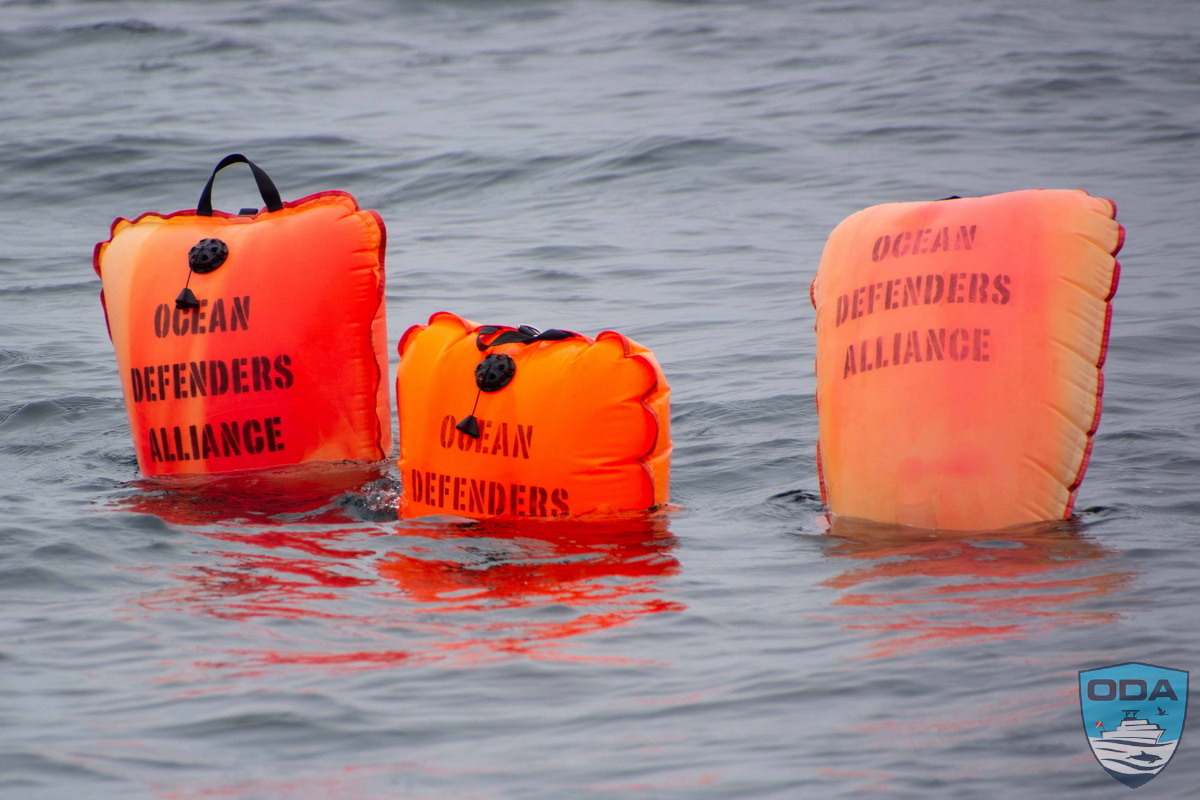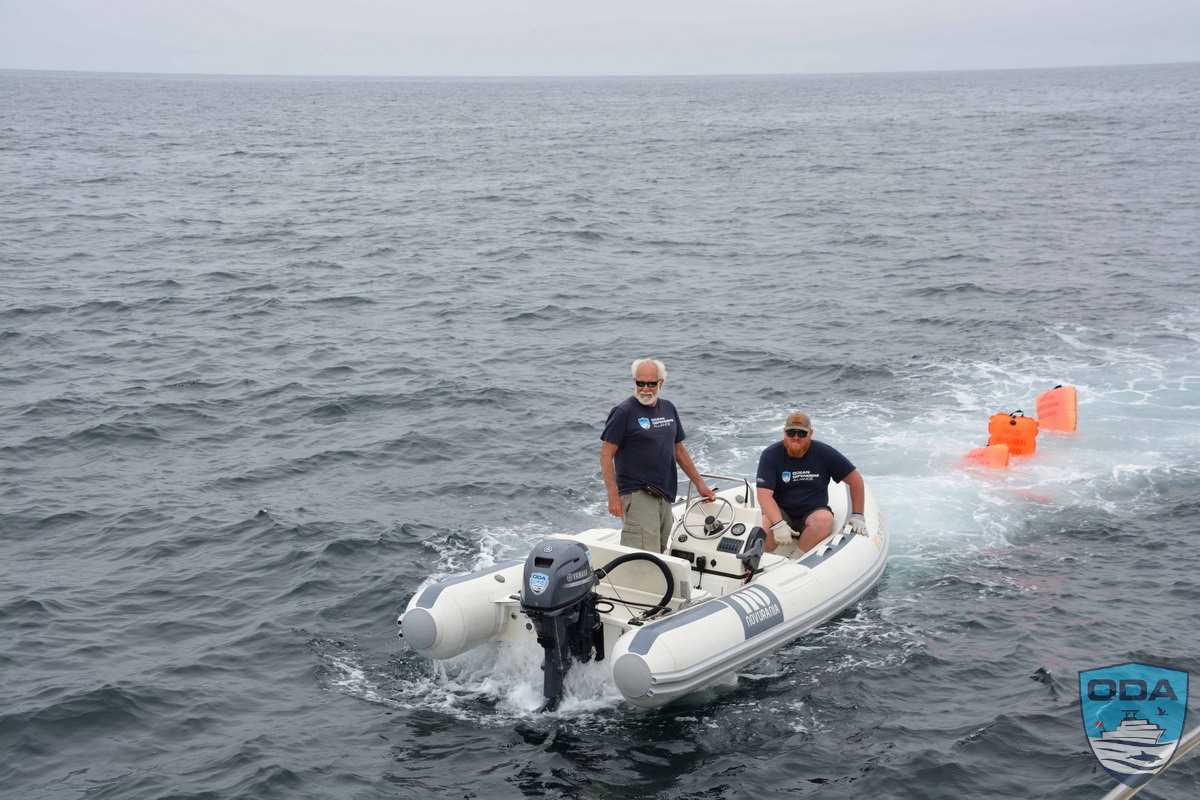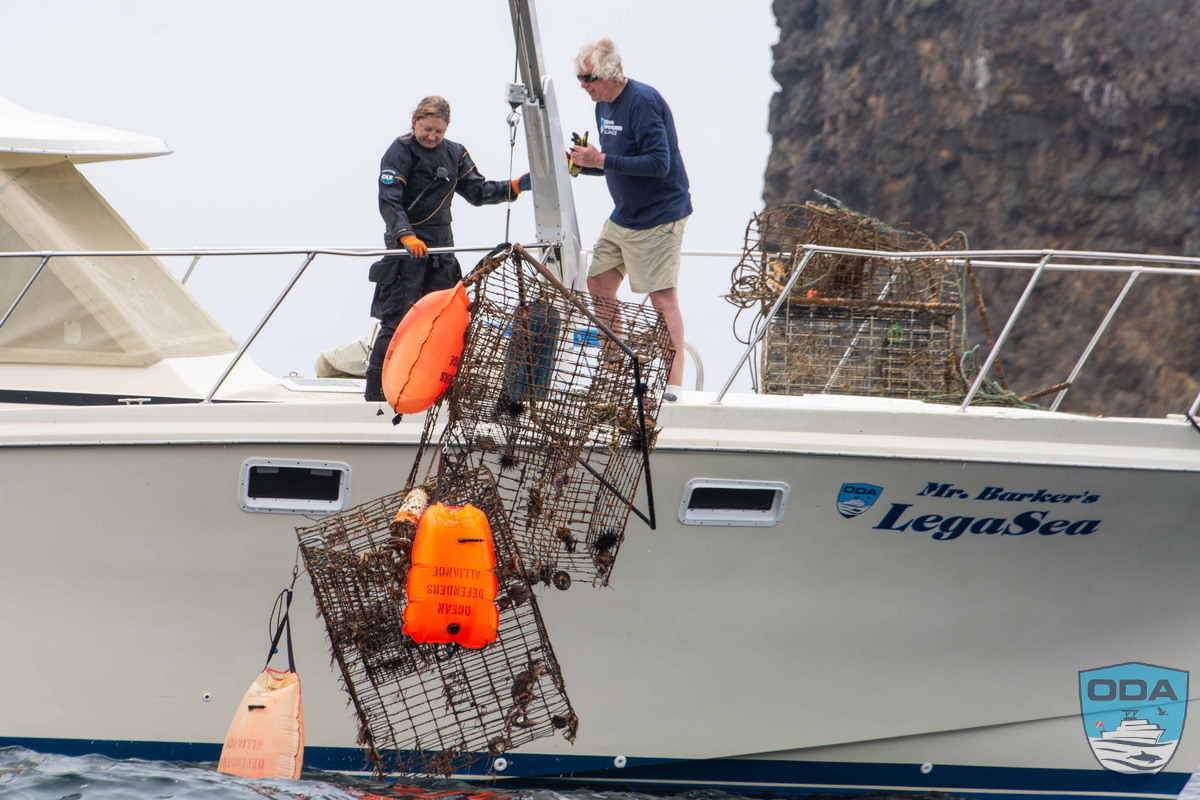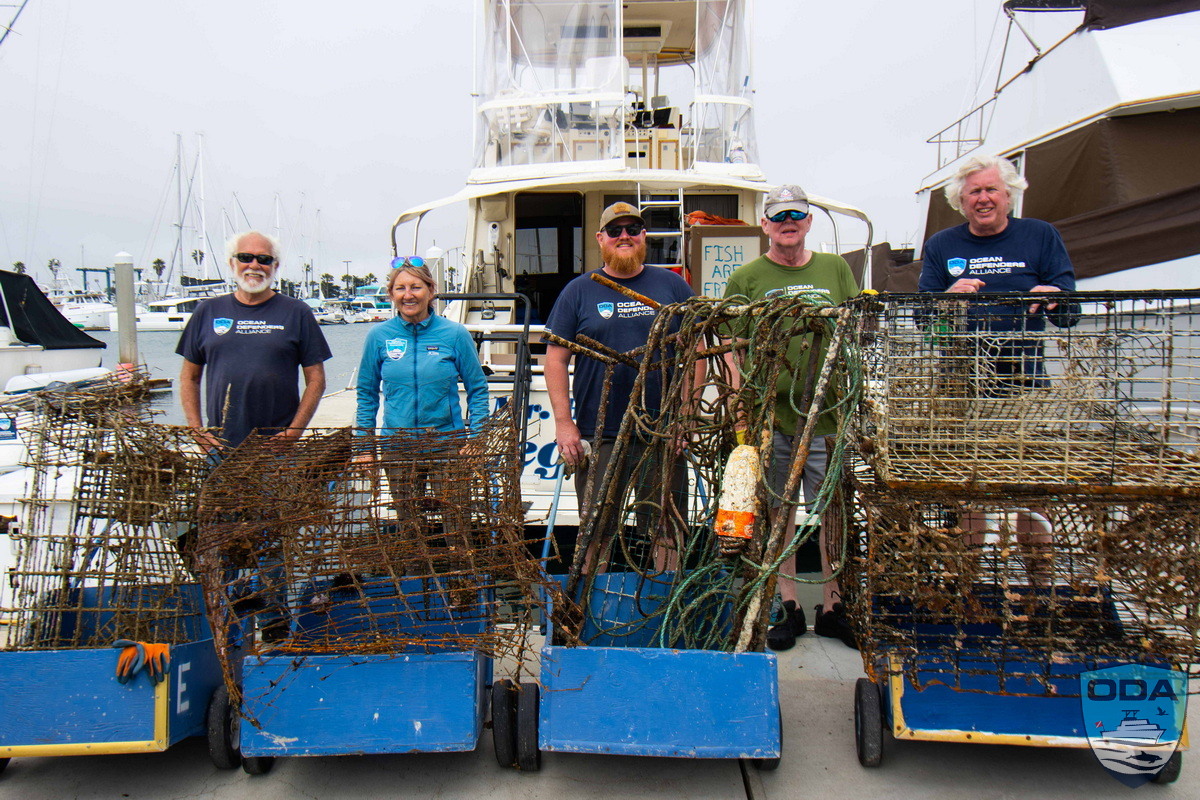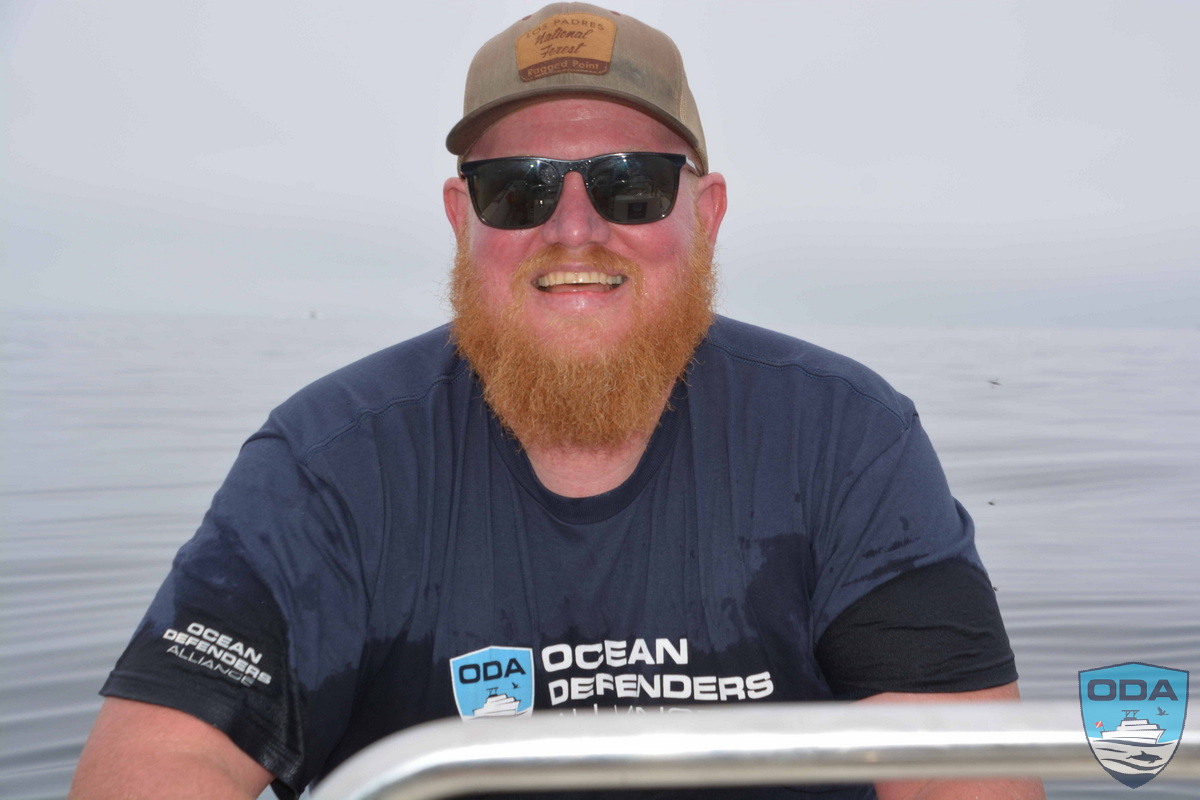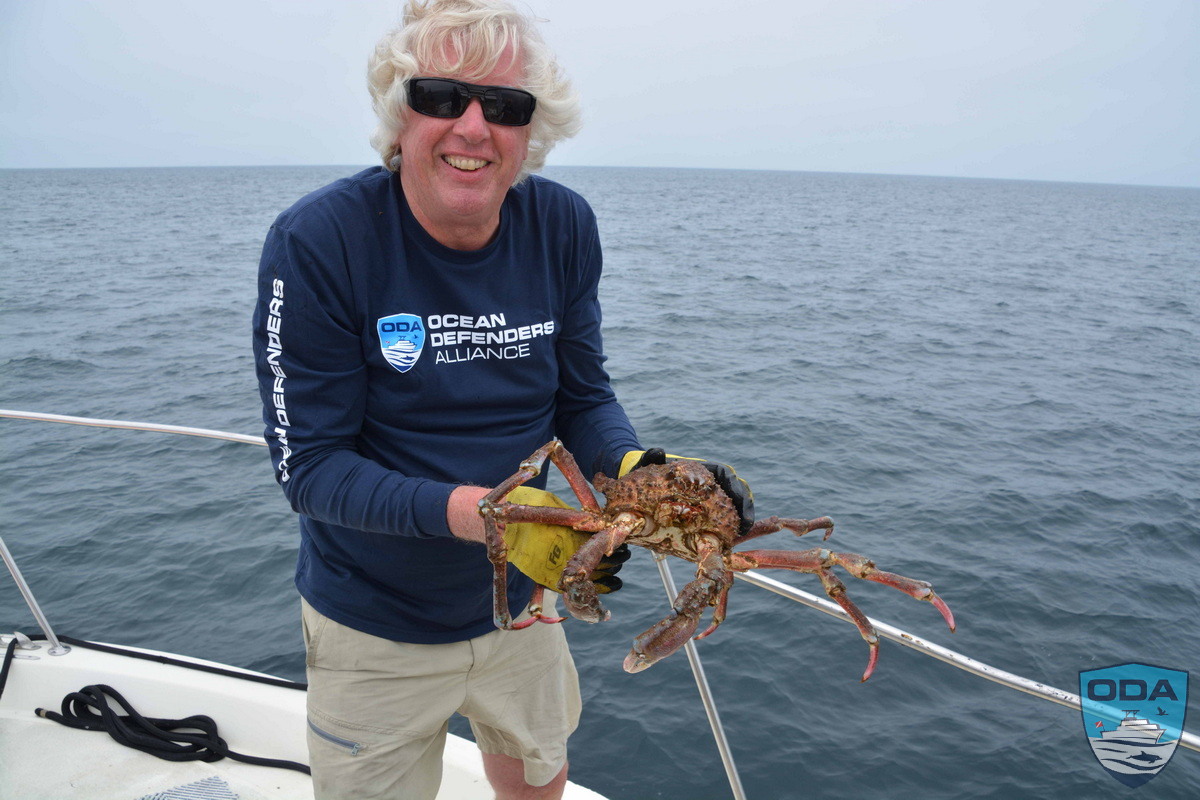.By Founder and President Kurt Lieber
With summer now in full swing and the winter storms behind us, we were able to motor out to Anacapa Island to look for some abandoned traps.
Ocean Defenders Alliance (ODA) first removed debris from the Anacapa waters in 2013! Unfortunately, due to the nature of abandoned fishing gear (800,000 tonnes lost worldwide annually), we must continue to visit known debris sites to keep them clear of the hazardous ghost gear.
To start off the Fourth of July holiday weekend in good fashion, a small group of us boarded our boat Mr. Barker’s LegaSea early on Sunday, July 2nd. We met at the boat slip in the Channel Island Harbor at 8am and were underway by 8:30. Although it was really overcast due to a thick marine layer, the seas were absolutely flat. It made for a comfortable and fun ride as we covered the 10 mile expanse in one hour.
We headed to a place called Arch Rock, which is on the far eastern end of the island. It’s the shortest distance to the mainland of all the Channel Islands. Anacapa is part of our National Marine Sanctuary system and is afforded protection from the oil and gas industry, as well as other extractive industries. Fishing is allowed around the islands except in specifically designated Marine Protected Areas (MPAs).
Within these MPAs, marine life is thriving. Of course, the animals that live there have no idea where the boundaries are and transit in and out of the area at will. The fishermen know this and set an inordinate number of traps right along the border to the MPA.
Back in 2021, I documented the number of traps that were set along the exact same area we’re diving on this day. Each one of the red dots marked on this map represents the approximate location of a trap buoy. So, on that particular day there were 54 active lobster traps there.
Because of all the major storms we had this past winter, we felt confident that we’d find some abandoned traps. Turbulent waters mean traps will become untethered from the rope that allows the fishermen to retrieve them or the rope gets detached from the buoy on the surface. These now derelict traps are pushed around on the ocean floor and often are never located by the fishermen. This is where ODA comes in!
The crew this day consisted of Todd Barrett, Kim Cardenas, Tim Pearson, Mike Wynd, and me. This was Todd’s first time out with us, and you’ll see, he proved to be up to the task!
We dropped the boat’s anchor about 200 yards away from Arch Rock, in 60 feet of water.
Kim and Mike jumped in, grabbed their underwater scooters and headed down the anchor line at 10:13am.
They hold onto the anchor line using it as a guide to get them to the right spot on the ocean floor. Todd and Tim got the RIB (Rigid Inflatable Boat) off the front deck and into the water. The RIB team’s job is to chase down the lift bags once the divers send them to the surface. When the divers locate traps (or other heavy debris), they attach the lift bag, also called a “float bag” to the debris, then inflate the bag (it’s like a balloon), and the lift bag floats to the surface towing along the debris with it.
It took a while for the first bags to show, but once they did Tim headed over to the site and Todd took on the arduous task of attaching a tow line to the trap. Once he did that, they towed it over to the LegaSea. Then Tim and Todd attached the end of the davit (crane) line to the debris, and I started to haul it onboard using the motorized davit.
It might sound like a simple task, but these traps are heavy, weighing at least 75 pounds each. The person attaching the lift line to the debris has to get that debris close enough to the surface that they can reach down and attach the hook. No small feat when you are in a small boat with the waves raising the boat up and down at the same time.
After much futzing and a few choice words, the RIB team backed away and the heavy lift got set in motion using the davit motor.
I want to thank Tim for all these great shots from the RIB looking back at the boat. They provide a helpful perspective that we don't always have the opportunity to capture!
After about an hour, divers Kim and Mike made their way back to the boat. The two traps they found were now safely secured aboard the LegaSea on the front deck.
We had some lunch while they told us about several of the animal encounters they had. Kim saw an angel shark, which was about seven feet long! Here’s picture of one that was taken by Craig LaPorte on an ODA dive two weeks ago, in roughly the same spot. So, most likely it was the same animal.
They also saw several halibut and some giant sea bass (GSB). Most of the GSBs were on the small side, at two-three feet long, but Mike saw four that were in the four-five foot range! Sorry, no pictures of the big fish at this time as this was strictly a work dive underwater. However, we did snap shots of these snoozing sea lions while we were positioning the boat:
There are more photos of these marine mammals in the photo gallery below!
After an hour-and-a-half surface interval (break from diving), Kim and Mike headed down again. Soon we were seeing more lift bags, which Tim and Todd hauled over to the LegaSea.
Then about 40 minutes after they started their dive, we saw three lift bags break the surface. Three bags? What the heck could be so heavy to require that many? Each bag holds enough air to lift 100 pounds. So, to require three bags meant that this had to weigh a lot. To lift a single trap usually requires two lift bags.
The RIB team had a heckuva time towing whatever it was over to the boat, but once there and hooked up to the davit line, we saw what the issue was. There were two traps attached to the bags. We’d never seen that before.
By this time, Kim was back on the boat with me, and we struggled to get both traps safely on the deck. After a few minutes of wrestling with them, we bagged our quarry.
In all we removed four lobster traps, three trap weight bars, lots of trap remnants, and 200 feet of trap lines, with one buoy still attached to the line. The latter is the kind of thing that entangles whales.
It was a wonderful way to start the Fourth of July festivities. Thanks Tim and Todd! We sure hope you come back, Todd – you were a great addition to the team!
A huge thank you to Kim and Mike for diving in and giving up their holiday weekend, too, to go on the hunt for these abandoned traps, no doubt saving countless lives from being caught in these things. One lucky guy was this sheep crab, which got a second chance at life. Live long and procreate!
Are you a diver in Ventura County with Rescue Diver Certification who would like to “give back” to the ocean? Great! Please email us at volunteer@oceandefenders.org.


